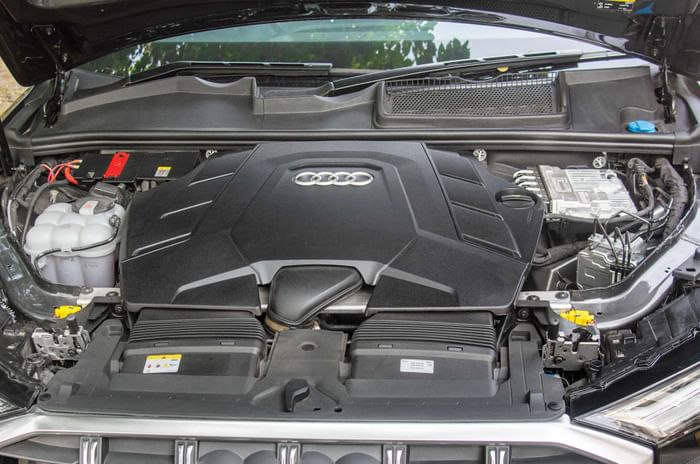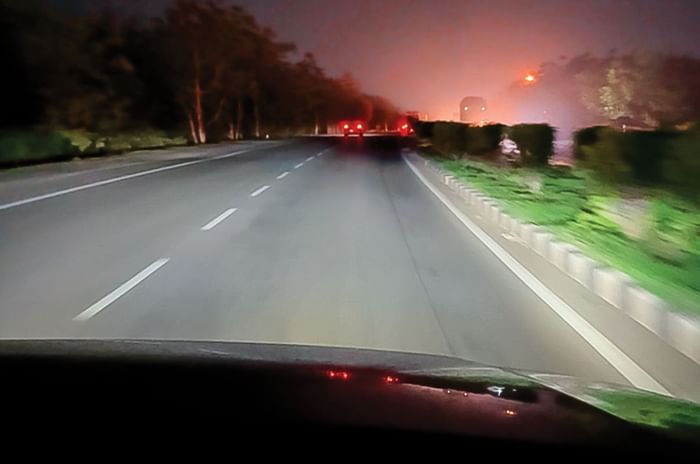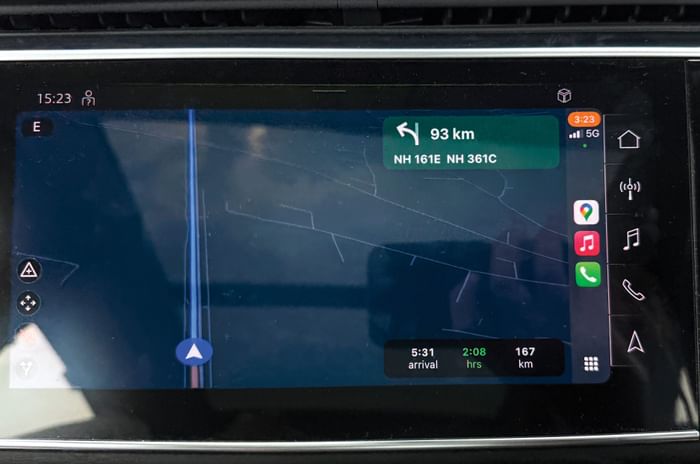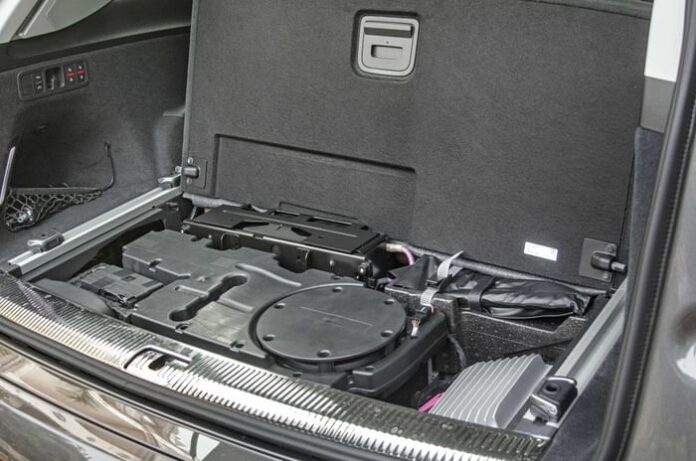A 1,500km road trip on an autobahn-like expressway is what the Q7 was made for.
The Autocar long term Audi Q7 had been restricted to the daily city grind for the majority of its stay with us. Thankfully, a 1,500km round trip across the state allowed me to finally stretch its legs – and do it on familiar territory. Mumbai–Nagpur–Mumbai via some scenic routes. Predominantly, the Samruddhi Expressway meant I could enjoy some of that Dynamic mode performance while relying on quattro for grip and humming along with the superb Bang & Olufsen audio system.
I didn’t have much use for the large 770-litre boot (with the last row folded down), so I didn’t bother and made do with 295 litres. The Q7 also has a neat trick, where, at the touch of a button, the air suspension can lower the car for easy boot loading – handy in case you have heavy luggage. There’s also a luggage protector that ensures small items are stowed in place and don’t move about.
Not having a spare wheel on a long drive is daunting, but you do get a puncture repair kit.
At the fuel pump, I topped up the tank, which guzzled 64 litres of petrol, giving me a range of 570km on the MID – hinting at an efficiency of 8.9kpl. My target was to get it into double digits.
While setting the tyre pressures, I remembered that the Q7 does not come with a spare wheel. Instead, there’s a puncture repair kit. On a desolate highway like the Samruddhi Expressway, it does hamper some confidence. As I set off, the road to the 8-lane super expressway was anything but super. Since the now-opened Igatpuri Tunnel was still under construction when I did this trip, the only way was via Kasara Ghat.
The twisties meant I could finally get it out of Comfort and into Dynamic, which improves engine response, stiffens the ride, and weighs up the steering. Sure, it’s not agile or nimble, but it does change its character.

3.0-litre V6 is creamy smooth and has a great balance of performance and comfort.
Wanting to make full use of the small exciting stretch cost me in fuel, as spirited driving dropped efficiency to a mere 5.8kpl. Thankfully, I got onto the runway-like Samruddhi Mahamarg, and the speedboat would have to be converted into a yacht.
I shifted the mode to Efficiency, set the cruise control to 118kph to avoid the speed limit chime and sit below the legal limit, and activated lane keep assist to help stay within the lines. Oh! And the audio volume was increased up to eleven.
The next 500-odd kilometres would be spent trying hard not to be hypnotised by the Samruddhi’s impeccable road markings. The engine settles at 1,500rpm, thanks to the 8-speed automatic, and the well-insulated cabin means the otherwise rumbly concrete surface of the highway isn’t as loud inside the Audi.
As the kilometres went by, the sun – which started in front of my windshield – passed across the panoramic sunroof, and a quick lunch stop revealed how comfortable the journey had been so far. Despite missing out on a massage function, the Q7’s seats are superbly comfortable. The support, cushioning and adjustability mean I didn’t have to get out and crack my back.

Matrix LED headlamps offer incredible illumination and can also automatically adjust throw.
I reached Nagpur post sunset, and this is where the MATRIX LED headlamps (now standard on the Technology version) came into their own. The brightness, throw, and illumination are good, and the system also adjusts individual LEDs to avoid disturbing other motorists.
The 700km journey was an absolute cakewalk, and thanks to the fuel-saving mode, efficiency was over 10kpl. The return leg was better still, since there was no traffic to dodge. While the déjà vu of the never-ending straights hit hard, the efficiency only improved.
On some sections, however, the soft setup of Efficiency mode resulted in pitching. But a trick to that is to select Individual mode and switch the ride to Dynamic. With the suspension stiffened and the engine relaxed, it’s the best of both worlds.

MMI feels dated with no wireless Apple CarPlay. Dual screens attract smudge marks easily.
However, after 1,000km of being in the Q7, it does feel in need of a major update. There hasn’t been a generational change since 2015, and even the updates aren’t catching up to the competition. For example, the dual-screen infotainment now looks dated.
Also missing are wireless Apple CarPlay and Android Auto – and having to resort to cables in 2025 is not in line with its almost Rs 1 crore price tag.
The Q7 might not be the most modern luxury SUV, but it still has a cult following and an image that was cemented by the previous version and its merits. It is a no-nonsense luxury SUV that does the basics – like comfort and performance – effortlessly. And the fact that I made a four-day, 1,500km journey with no fatigue is proof that it can still hold its own when it comes to barnstorming across the state.
| Audi Q7 long term test data | |
|---|---|
| Price (ex-showroom, India) | Rs 99.8 lakh |
| Odometer | 7900km |
| Economy | 10.3kpl |
| Maintenance cost | None |
| Faults | None |
Also See:
Jeep Meridian long term review, 19,500km report
Mercedes Benz EQS SUV long term review, 6,000km report
